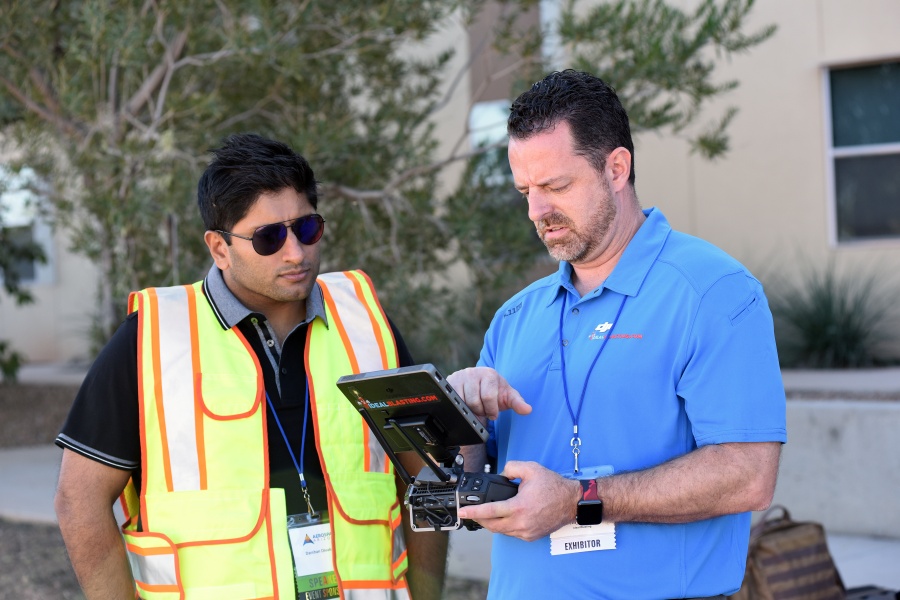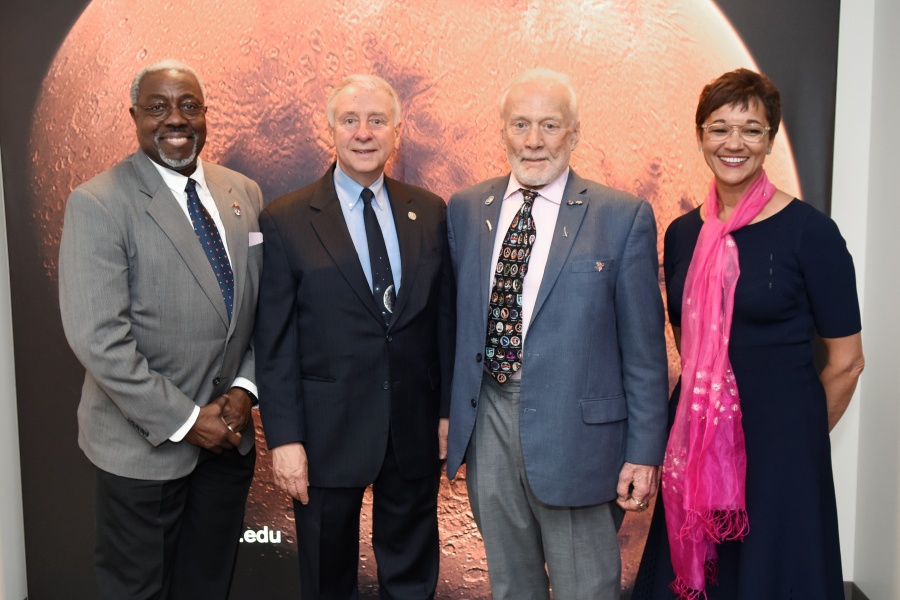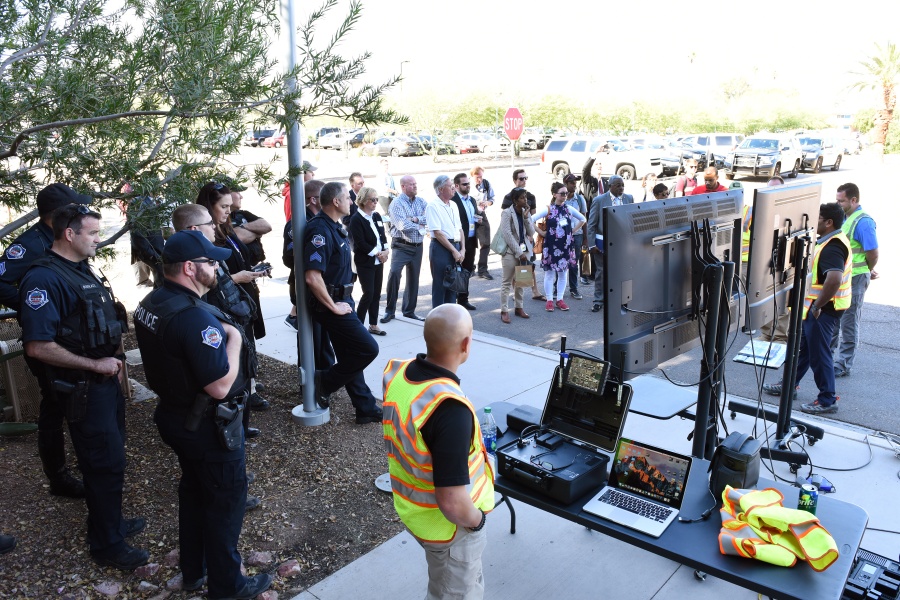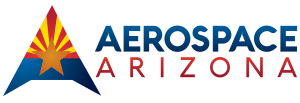Aerospace Arizona promotes, advances, and supports the state’s aerospace industry. The organization represents its members and informs them on legislative, regulatory, safety and technical issues. It also educates federal, state, county, and local elected officials and their staff, as well as other key stakeholders, on the importance and necessity of policies that facilitate a thriving aerospace industry in Arizona. The association’s mission is to make Arizona the go-to destination for the industry. In line with that mission, Aerospace Arizona also operates an unmanned test site in Southeastern Arizona.

Aerospace Arizona Board Members (Left to Right) Moses Koyabe, Mignonne Hollis, Lorie Graham, and Adam Hawkins
It all began in 2014 when, Mignonne Hollis – the Executive Director of Arizona Regional Economic Development Foundation – was tasked with creating a conduit to grow the state’s aerospace industry. “Arizona had a lot of people working independently and in different sectors of the aerospace industry. We saw an opportunity to bring them all together,” said Hollis, who has been a central figure in the economic development community for more than a decade.
The association recognized the industry’s growing global activity how well positioned the United States was to grow at the same pace – they wanted Arizona to capture as much of that as possible. In 2018 alone, aerospace had an estimated annual revenue of $929 Billion. The US stood at the top of the business globally, with Arizona in the fifth position for employment and industry growth.
During the rapid economic growth of the last uptick, the association helped the state become one of the largest and fastest-growing aerospace and defense centers in the US. Arizona comes in third for attractiveness with its ideal climate for aircraft testing and space observation, one of the best transportation infrastructures, and a tax policy congenial to business.

From there the association created a forum for big industry, small businesses, entrepreneurs, and academia to come together and exchange ideas about how to make Arizona the ideal space for all things aerospace. “One of the first ideas to come out of our early discussions, was a need for a quality unmanned test site. At that point in time, most of the test work needed to get the hours in for new technology was going out of state,” said Moses Koyabe, President of the association’s advisory board.
The association created private-public partnership with the City of Benson for use of the city’s airport, located 50 miles east of Tucson. Since the creation of the test site, Aerospace Arizona has helped large, medium, and small businesses test their unmanned equipment. “The location is perfect. We have almost perfect weather conditions, protected airspace, and the ability to give companies long test windows,” said Hollis.

In the company of Space veterans Charles Walker and Buzz Aldrin
“We have had monumental success in bringing the industry together, shaping policy, and helping spawn innovation. There is still so much more work to do.”– Mignonne Hollis, Executive Director, Aerospace Arizona
The association took the next big step in 2016, launching Unmanned Arizona – a two-day annual trade show hosting guests from all over the world. The event featured technology demonstrations, site tours, and panel discussions with policymakers, regulators, and industry. “Our first event was a huge success, and each subsequent year we have been able to get even better the last one,” said Koyabe.
All that changed in late February with the global spread of Covd-19. “There are profound and unprecedented challenges ahead for the industry. Hollis said, “we are working around the clock to provide support to our members.
On any given day, we are working with policymakers to provide economic aid to the industry, helping members find the resources they need to get by, and make sure that we are ready to weather the storm.” The association went overnight from a focus of capturing growth in the industry, to preservation and triage.
Asked about her perspective on where aerospace is going given the current set of circumstances, Hollis said, “It’s going to be tough. We will have to work harder than we ever have before. We will survive!”

Two projects that were in the association’s queue turned out to be right in line with the aid needed under the circumstances: One to support first responders with unmanned technology and another to use drone technology for medical testing. The first responder project is an innovation challenge, in partnership with ASU’s Research Enterprise and a grant from the National Institute of Standards and Technology (NIST).
The purpose of this is to advance unmanned technologies by building and flying drones designed specifically to support first responders. One of the barriers for the public safety community is having access to drones that can fly for long periods of time, ninety minutes or greater, while carrying a heavy payload. Emergency responders can accomplish their mission more efficiently and effectively if the drone flight time is maximized. This is critical for first responders when increased flight endurance combined with flexibility is the difference between life and death.
“These projects are turning out to be lifesavers. Literally,”– Moses Koyabe, President, Aerospace Arizona Advisory Board
On the medical testing side of things, Aerospace Arizona is working in partnership with industry and academic resources to shorten the amount of time it takes to get samples to the lab. Medical professionals need lab results as quickly as possible to make decisions about patient care.
Getting those results when they are operating with an off-site lab can be challenging. Enter drone technology. The association is looking into ways that they can help the unmanned industry solve this problem. “This is a huge issue and we are working to get field-tested technology to the marketplace fast,” said Hollis.















